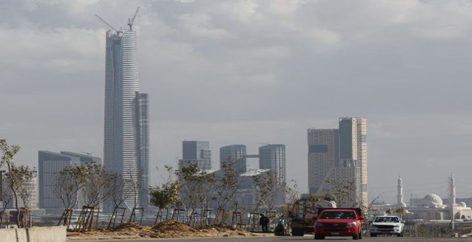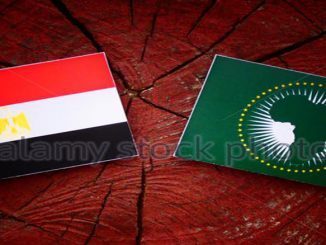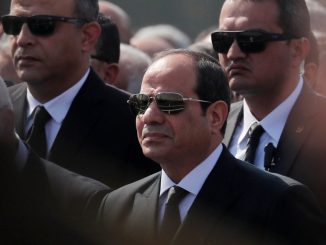
In the past few weeks, 14 ministries and agencies and about 30,000 government officials have -in theory- begun to work in the New Administrative Capital being built at vast expense 30 miles east of Cairo.
Construction of the city, billed as a showcase of Sisi’s “Second Republic”, has now well overshot its original first-phase completion date of 2019-2020.
But this situation has been sufficient for Sisi to meet ministers at the capital and announce the success of the project as a “solid basis for the comprehensive modernisation of the Egyptian administrative apparatus, where governance and digitisation will be the cornerstone”, stated The Times.
There has been little public fanfare, however. The move to the new capital coincides with a serious economic crisis and a fall in the value of the Egyptian pound, leaving many questioning the project’s cost, estimated at $45 billion.
Even some of the government workers moved out of Cairo’s crushing traffic and pollution to new offices, and they are complaining, saying it takes them up to two hours to commute every morning. Few have so far taken up offers to move into the new city.
“It is a capital for the military and its support base, but it is not for the poor, it’s not for the middle class, and it is not for the mass of people that actually live in the country,” Maged Mandour, a political analyst and author, said.
The new capital is planned to be built in stages across the space of 170,000 feddans (270 square miles), with the first phase covering about a quarter of that. The government says 70-80 percent of that phase has been completed.
Nevertheless, the yellow of the desert stretching away in the distance remains the dominant color.
For seven decades, the military has ruled Egypt from buildings designed during the semi-colonial, semi-liberal era of the country’s last monarchs.
The architecture of the new city is modernist — more in keeping, some say, with the authoritarian nature of military rule.
The government district, covering an area of more than 800 acres, is central. The People’s Square, located at its heart, is a marble-covered space with the world’s tallest flagpole in the center. On either side are the cabinet building and the two chambers of parliament.
A new Grand Mosque, with a capacity of 107,000 worshippers and a construction cost of 750 million Egyptian pounds (£19 million), is located at the top of the square. The lavish spending was criticised.
Nearby are the new presidential palace and the octagonal headquarters of the ministry of defense, the country’s real power bases.
Construction workers and some government employees are the only occupants during the day, and at night, the city becomes a ghost town.
The first program to move employees offered housing in a previous “new city” ten miles away, Badr City. That only had the effect of reducing demand in the new capital when apartments went on sale.
Take-up has been low despite government discount schemes. “All these buildings are empty,” a concierge said in one block on a recent visit.
The apartments lack the character of Cairo’s historic center, for which the lack of traffic and the as yet unfinished Green River Park, which threads through the development, have so far been inadequate compensation.
Despite Sisi’s insistence that the state wouldn’t “pay a penny” for the new capital, a study by the US-based Project on Middle East Democracy (Pomed) said: “Most of the tens of billions of dollars spent on the venture so far have indeed come from the state — whether in the form of government debt, the sale of state-owned land, direct budget allocations or loans subsidised by the Central Bank of Egypt.”
The city is one of several “megaprojects” Sisi has backed, including a second channel for the Suez Canal. The projects have left the country on the verge of defaulting on its loans.
He says they are a sign of his willingness to “take decisions” that his predecessors shrank from, and a modernised state will lead to more investment.
Building materials arrive in the central business districtBuilding materials arrive in the central business district
Building materials arrive in the central business district.
Critics say the key to attracting investment is to reduce the role of the army in public life, and especially in its economy. The company building the new city, like many of Egypt’s big firms, is ultimately controlled by the military.
Egypt will hold presidential elections next year, which Sisi is expected to win, but for which he hoped the new city would be a popular launchpad.
Pomed predicted that Sisi’s position may instead come under threat if the project finally runs out of money. Finishing the first phase looks difficult, let alone the second and third, with the possibility the project may leave the government stranded in the middle of a half-built city in the desert.
“The regime’s goal was very clear from the beginning, which is the centralisation and concentration of economic power in the hands of the military, and the capital is just the clearest example of that,” Mandour, the analyst, said.
“Even though they moved there, it does not mean much, and there is good reason to believe that it will end up being a failure.”



